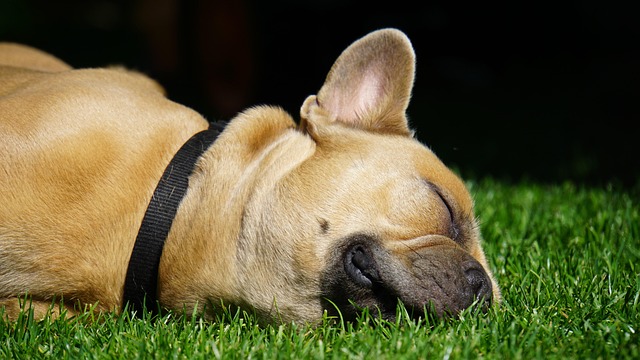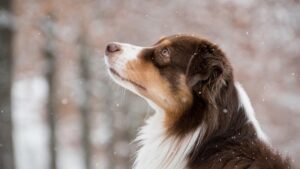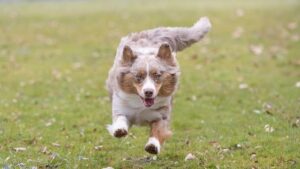Why Do Dogs Roll in the Grass? Instincts and Health Clues (Vet Verified)
Ever wondered why dogs roll in the grass like it’s their favorite pastime? Yes, we know – one minute they are clean and the next they are rolling around in a grassy patch with all kinds of things sticking to their hair. Gross? Not to them. The behaviour is deeply rooted in instinct, communication, and even health clues. Let’s dig into what your pup might really be telling you when they turn into a furry lawn roller.
Key Takeaways:
- Dogs roll in the grass for pleasure, to explore scents, and for instinctual reasons.
- Relaxed, occasional rolling is normal; intense or focused rolling can signal irritation.
- Allergies, parasites, or skin infections are common causes of problem rolling.
- Safe rolling means untreated lawns, parasite prevention, and post-play skin checks.
- Maven Pet’s dog health tracker helps spot early signs of itching and shares precise data with your vet.
Why Do Dogs Roll in the Grass?
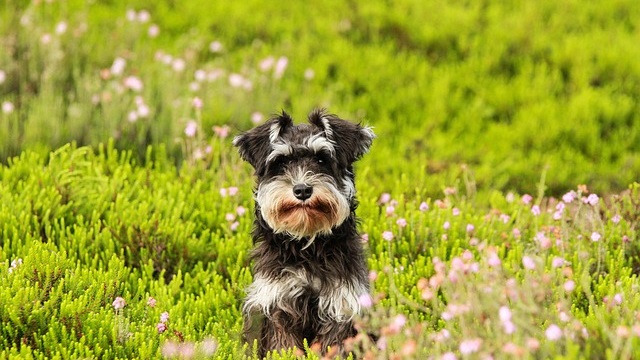
Dogs roll in the grass for several instinctive and sensory reasons. Don’t worry, most of them are pretty normal. Here’s what triggers that behaviour:
- It feels amazing: The texture of cool grass can relieve an itch, help loosen shedding fur, or just feel soothing on the skin. Think of it as your dog’s version of a good back scratch.
- They’re masking their scent: Dogs roll in the grass to disguise their own scent. It’s the wolf genes kicking in and bringing back the bygone times of stalking prey.
- They’re gathering information: Grass carries scents from other animals, food, or even people. Rolling in it allows dogs to “collect” those smells for later sniffing and social sharing.
- It’s a way of communication: When dogs return home carrying new scents, it’s like bringing a story to the pack told through smell.
- They might be reacting to irritation. If rolling becomes frequent, intense, or focused on a single spot, it can signal allergies, skin irritation, or even a flea infestation.
Most of the time, it’s just dogs enjoying a good time. Rolling in the grass is a very natural and instinct-driven ritual that shouldn’t be discouraged. However, if the behavior persists and the dog appears uncomfortable afterwards, it may be a good time to consult with a veterinarian.
Why Do Dogs Like to Roll in the Grass?
Dogs like to roll in the grass because it feels good, smells fascinating, and taps into instincts that go way back to their wild ancestors. What looks like random wiggling to us is actually your dog’s way of soaking up sensory pleasure and exploring the world through scent.
Why Do Dogs Roll Around in the Grass?
When dogs roll around in the grass, they are expressing joy. It’s as simple as that. This kind of rolling tends to be more about emotion than function. It’s play, plain and simple. Many dogs use grass-rolling as a way to release pent-up energy or show that they’re relaxed and content.
You might notice it after a good walk, a meal, or when they’re feeling especially carefree. It’s their version of stretching out on the couch after a long day.
“I got the Maven sensor for my 14-year-old Chihuahua mix with heart and trachea issues. It gave me back peace of mind – I can track her RRR, BPM, drinking, and activity anytime and know instantly if something’s wrong. Highly recommend!”
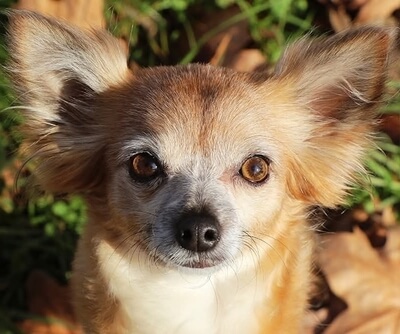
★★★★★
Chiara De Luca
Titti
Instinct vs. Itch: How to Tell the Difference
The usual rolling appears relaxed and occasional, while itch-related rolling is focused on a single spot, repetitive, and often accompanied by scratching or skin changes. When dogs roll out of instinct, it’s usually all about pleasure and exploring the surroundings. Their body language is loose, their tails wag, and they move from one patch of grass to another without a care in the world.
However, if your dog rolls with ferocity and seems fixated on a single spot, it may be more about seeking relief than instinct. Itch in dogs and cats can even be linked to a deep pathophysiology that is not easily understood. Still, the usual culprits are issues such as allergies, skin infections, or parasites.
When Rolling Could Mean a Problem
“Rolling in the grass is usually just dogs being dogs — but persistent itching or skin changes can be a signal that something isn’t quite right.” — Carolina Domingues, DVM, Veterinarian at Maven Pet
Parasites (Fleas, Ticks, and Mites)
If your dog is rolling repeatedly in one spot, especially near the tail, groin, or belly, parasites could be the guilty party here. Even if you don’t see the fleas, dogs with flea allergy dermatitis (FAD) may react severely to a single bite, let alone more.
If the rolling is concentrated on the tail base, groin, or the back of the legs, and you see that the skin there has darkened and become inflamed, it could be a signal for parasites.
Environmental Allergies (Including Grass)
Some dogs roll because the grass itself is the problem. Grass pollen and plant oils can irritate sensitive skin, and that can trigger an allergic reaction. If you notice that your pooch is starting to roll around after being outside, it could be because it’s allergic to something it came into contact with during playtime.
Skin Infections
Constant rolling and scratching can break the skin and invite bacteria or yeast. These infections, known as “hot spots” or acute moist dermatitis, can develop quickly and cause pain, as well as a foul smell. If you notice an inflamed patch on your dog’s skin and it starts oozing, it’s time to visit a vet.
Safe Ways to Let Your Dog Enjoy Rolling
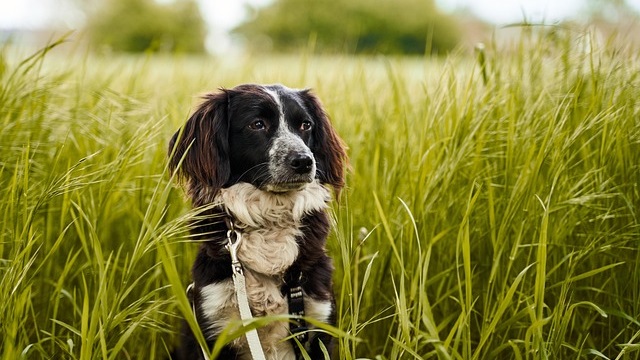
With a few precautions, you can let them enjoy it safely. Here’s how to keep the fun carefree and clean:
- Avoid lawns that may be treated with fertilizers, pesticides, or herbicides
- Maintain a year-round flea and tick protection (as recommended by your vet)
- Inspect the dog’s skin and clean it after a good roll
- Shorten the rolling time for dogs with allergies
- Stay observant with the help of a pet health tracker
A little mindful management goes a long way. With safe spaces, regular grooming, and good parasite control, your dog can keep rolling to their heart’s content, without the need to call a vet.
How the Maven Pet Health Monitor Helps Track Skin & Behavior Changes
If your dog’s grass-rolling sometimes turns into scratching, the Maven Pet’s pet health app can help figure out why. Its lightweight collar sensor continuously tracks your dog’s head-scratching and shaking patterns even if you are not around.
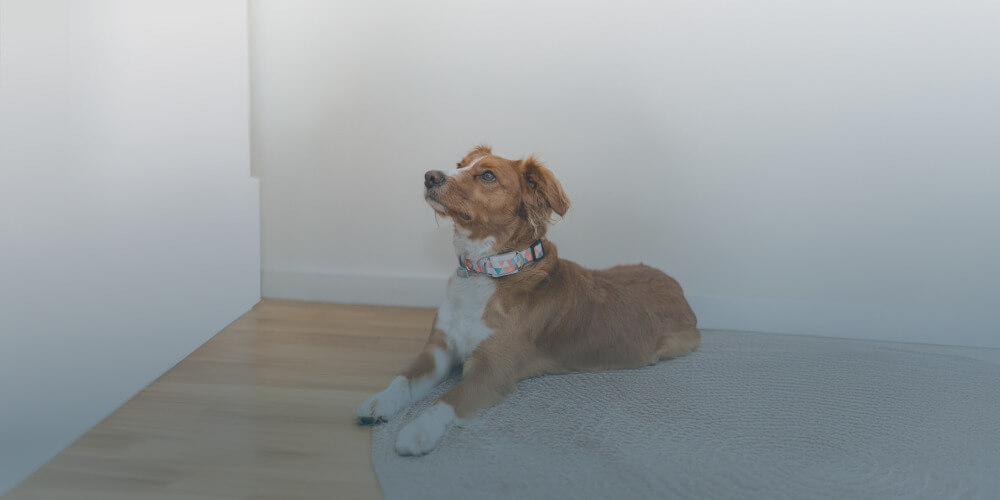
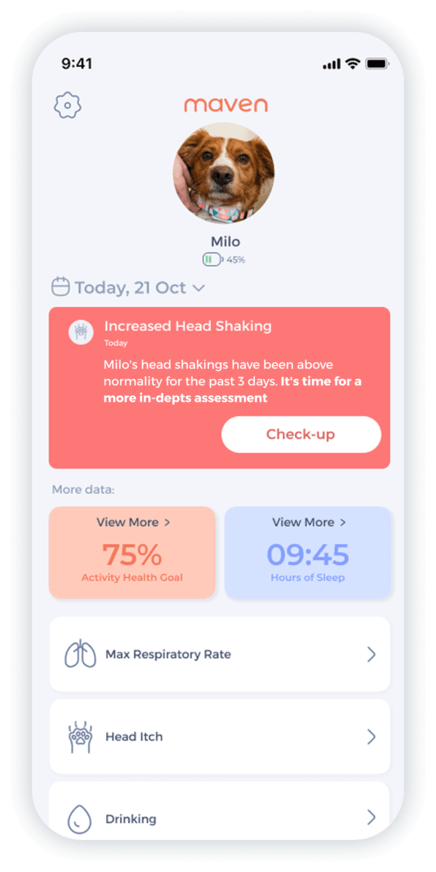
Monitor heart rate, respiratory rate, activity & rest, drinking, itch behavior.
One of the best features of Maven Pet’s dog health tracker is the Dog Itch Tracker. The app builds a personal baseline for your dog and flags “high-itch” days, helping you see whether flare-ups align with things like fresh grass exposure, pollen spikes, or recent baths. Over time, Maven creates easy-to-read weekly and monthly charts, so you can literally see when and why your dog’s skin might be acting up.
When something’s off, you’ll get an alert, and the data is vet-ready, removing all the guesswork from the equation.
Conclusion
Rolling in the grass is something that makes any dog feel joyous, and it’s usually harmless. But if it turns into constant scratching or irritation, it’s time to investigate. What your dog needs is mindful care, safe play spaces, and smart tracking from Maven Pet to keep everything in order and rolling in the grass itch-free.
Maven Pet focuses on improving the quality of life of our pets with technology, using artificial intelligence (AI) to enable proactive pet care. By accurately collecting and monitoring pet data 24/7 and flagging any irregularities, Maven Pet empowers pet parents and veterinarians to stay ahead of potential health issues, ensuring the well-being and longevity of our beloved companions.

